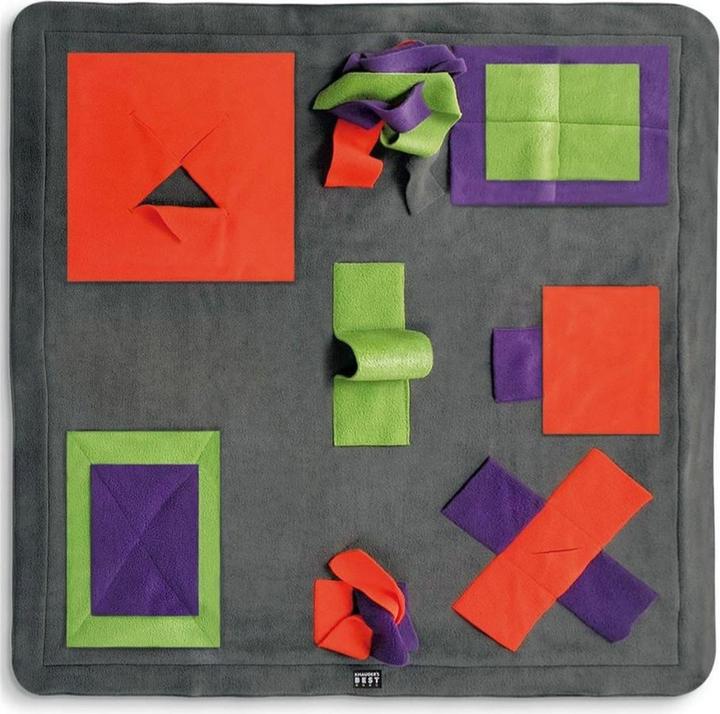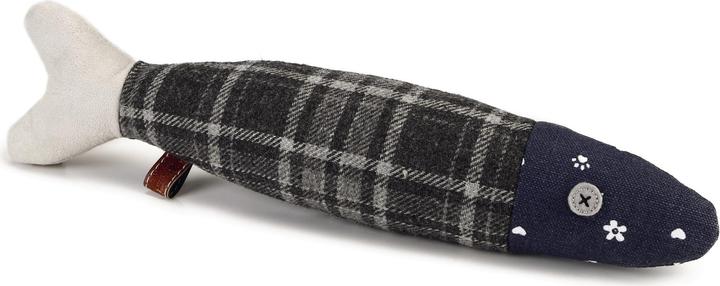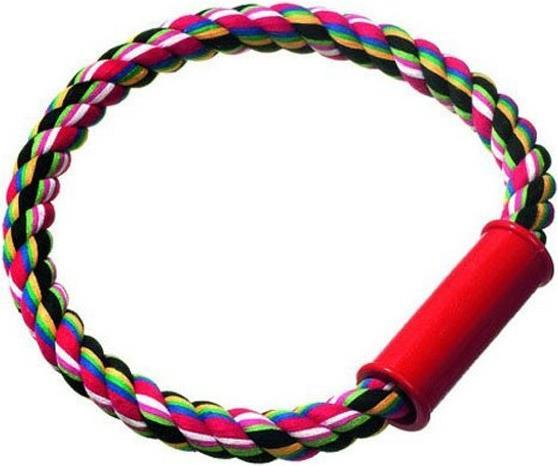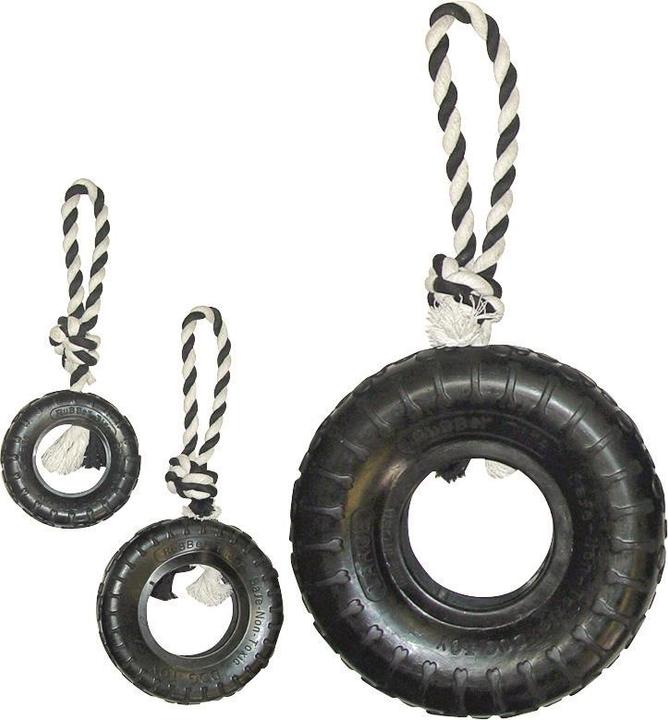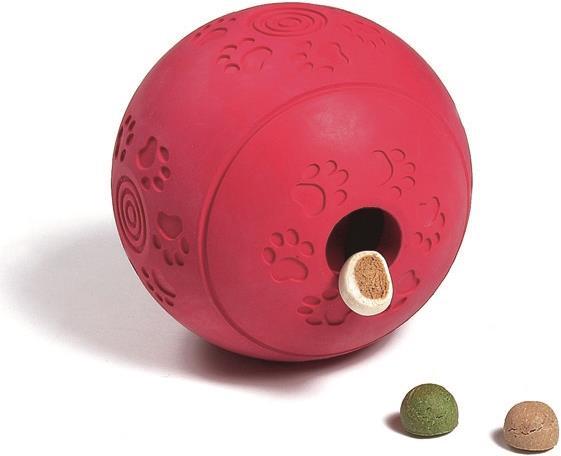
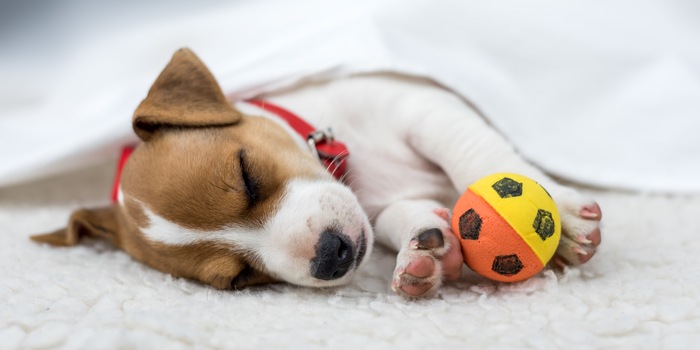
Sniffing, lunging and romping around: How to make your dog happy
He should behave calmly when he is on a lead. He should protect the property from unwanted intruders. And he should fetch well. But is that what your dog really wants?
Many dog owners demand a lot, if not too much, from their four-legged friend. From independently recognising their own wishes and understanding their mood to expecting them to behave in a way that is typical of dogs. Typical dog behaviour means, for example, chasing wild animals. In other words, things that a dog should not actually do as a pet. Demanding this from your four-legged friend can lead to stress, pressure and frustration. To deal with this, you need to train your pet. You can read how to do this here.
The focus is on fun
If you give your dog special exercise, he can relax afterwards and the exercise also serves as an outlet to get rid of energy. You give him a task that is tailored to him as an animal, but also in your interests. It is very important that fun is always at the centre. The dog must never have the feeling that it is being forced to do something it doesn't want to do. Playing together and having fun shows him that you are also enthusiastic and are not playing games with him. He will then automatically look to you as a role model. If you show him respect and recognition, he will be all the happier - and will also be happy to find some extra motivation for the next, more difficult task.
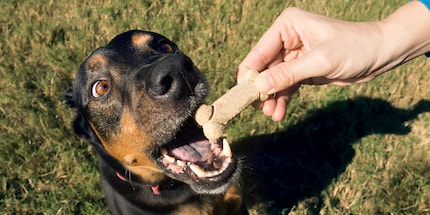
It's all in the mix
In order to get the most out of your furry friend, a mix of sniffing, skill or intelligence tasks and physical activities will help. The intensity and frequency of the individual disciplines can vary depending on the breed and character of the dog
It can also serve as a counterbalance for healing purposes: A hyperactive dog can be calmed by nose and head work, for example. Exercises that encourage the dog to follow can also have an educational effect.
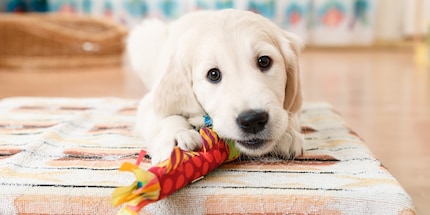
Outload for everyone?
If you're wondering whether your dog also needs special exercise, the answer is no. On the one hand, the everyday life of the human plays a role, but on the other hand, it also depends on the dog itself. There are many animals for whom "normal" running along on a daily walk is sufficient training. However, caution is advised with hyperactive dogs in particular, as too much activity can even be counterproductive and spur them on even more instead of calming them down.
But what does exercise actually mean? Experts speak of effective utilisation when a living being is able to use almost all of its innate and inbred abilities and characteristics. The brain should therefore be challenged and trained in as many areas as possible. As mentioned above, playing alone is not enough - it's the mix that counts.
It's all in the head
When the term "exercise" is used, it usually refers to mental exercise. This is where dog toys specially developed for training purposes come into play. This type of toy works according to a simple principle: the dog can smell (and sometimes see) the food, but it cannot reach the goodies without further effort. Hinges, blocks, rotating discs or drawers usually get in the way. The toys can be compared to toys for small children: By following logical sequences, the user - whether child or dog - achieves the desired result. It should be noted that such toys are not a permanent occupation. The toys are ideal for effective exercise, but you should use them in a targeted manner and then remove them again.



Karlie doggy brain train
Intelligence toy dog
Educational training methods also challenge and promote your dog's mental fitness. The rule of thumb is that around 30 minutes of mental exercise per day is enough to keep your pet adequately stimulated without overtaxing them.
In this case, for example, lunging is a good exercise. Lunging? Possibly derived from the term of the same name from horse training, this activity involves the dog recognising, correctly interpreting and following human signals. To do this, you can either mark out a circle or train the whole thing relatively simply during a walk. The important thing with this exercise is that the dog looks at your signals without you giving it audible signals. The point is for the dog to concentrate solely on your body posture and gestures. He should also recognise where the boundaries are, what he is allowed to do and what he is not allowed to do. It is essential for the success of this activity that you reward your four-legged friend when he has done something right. In the advanced version, the whole thing should also work over a greater distance.
Social exercise is also important, but less of a focus, as when you take your dog for a walk, you will often meet someone who also has a four-legged friend with them. This is crucial because he needs to learn how to interact and communicate with other dogs. He should be able to recognise threats, assess other dogs, give in and dominate. Humans cannot teach him all these qualities, he has to learn them from like-minded people. However, social interaction with humans can still be an advantage here: if you let your dog help out around the house (for example, shredding cardboard for waste paper), you not only integrate him into everyday life, but also give him a task.
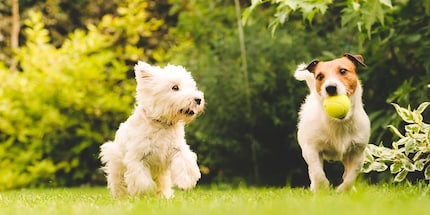
Make sure you give your dog time to find the solution himself. Only when he runs away disinterested and loses interest in the toy should you intervene if necessary. The aim of the exercise is for the dog to realise that it has to succeed on its own. Otherwise, he will realise that a desperate look is enough and you will give him his treat - the dog will then train you, so to speak, instead of vice versa.
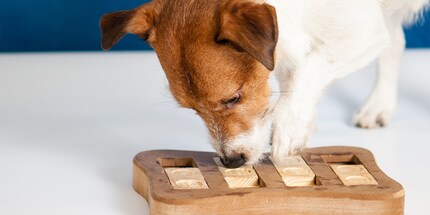
They have a good nose, these critters
Dogs are known for their fine noses. Long-snouted breeds are said to be even better sniffers than their short-snouted counterparts. In any case, all dogs have something in common: they can smell much better than humans. With the right search game - a sniffer rug, for example - your furry paw will have fun searching for treats in a thicket of scraps of fabric. Some dogs are even happy to search for goodies in the home. Most, however, need a bit more of a challenge, and a sniffer rug is the perfect tool. It's best to give your dog a little less breakfast or lunch, then he will automatically have the desire and appetite to search for the treats.
Another activity is the so-called target object search. Here, the dog should learn to find specific objects and indicate them accordingly, for example by barking. It is important that it is always the exact same objects that the dog recognises by their specific smell. This type of exercise is particularly useful when travelling or when you are visiting. Of course, it also works in your own home, because your pet has to learn the whole thing somewhere first.
The "nose work" also helps against anxiety behaviour or panic attacks. The dog is absorbed in the work while looking out for odours and trying to find objects. He then almost completely blocks out his surroundings and can thus avoid conflicts.

Stop, Forrest, stop!
What no dog needs and does no dog any favours in terms of efficient exercise is constant running. No, a dog doesn't need to run around all the time. But: Yes, a dog needs exercise. In this case, however, exercise means that it moves calmly and evenly while it can explore its surroundings. If you force him to run a marathon, he will miss out on a lot of things that are crucial for his development.
Accompanied runs and short sprints are perfectly okay, as is romping around with other dogs. But: The ever-popular "chasing after thrown balls or sticks" is not something a dog would ever do in the wild or on its own initiative. It only builds up pointless stress and is of no use to you or your pet. If your four-legged friend has discovered something that he wants to have or show you, he will get it on his own.
But be careful: too much exercise can also be counterproductive. Exercising your dog more so that he is tired and exhausted in the evening is not the solution. Rather, it depends on the type of exercise. If you replace sniffing and mental exercise with sport, your dog will become fitter, but his mental abilities will fall by the wayside. You should also avoid games where the dog has to chase after an object. Your dog is only pretending to have fun here, because the situation is actually very serious: he learns certain chase sequences and automatically learns to chase after objects, catch them and kill them.
I therefore recommend a longer walk per day (about an hour) at a leisurely pace, with lots of exploring, investigating and sniffing, but not too many environmental stimuli. Ideally (if there are no rules), the dog can move freely or walk on a very loose lead. Added to this are the natural walks and contact with other dogs. And, very importantly, a dog also wants to play with its owner from time to time. It's fun and strengthens the bond between animal and human.
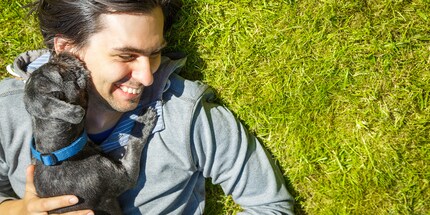
When I'm not stuffing my face with sweets, you'll catch me running around in the gym hall. I’m a passionate floorball player and coach. On rainy days, I tinker with my homebuilt PCs, robots or other gadgets. Music is always my trusted companion. I also enjoy tackling hilly terrain on my road bike and criss-crossing the country on my cross-country skis.
Practical solutions for everyday problems with technology, household hacks and much more.
Show all

